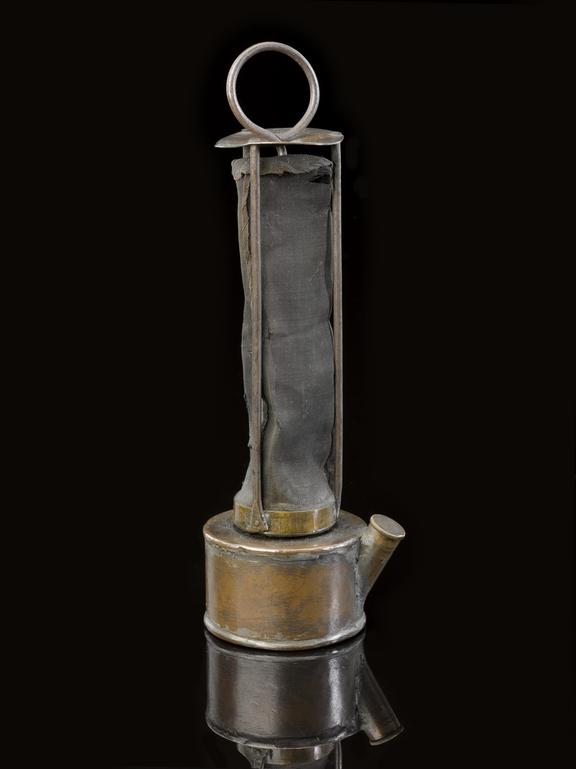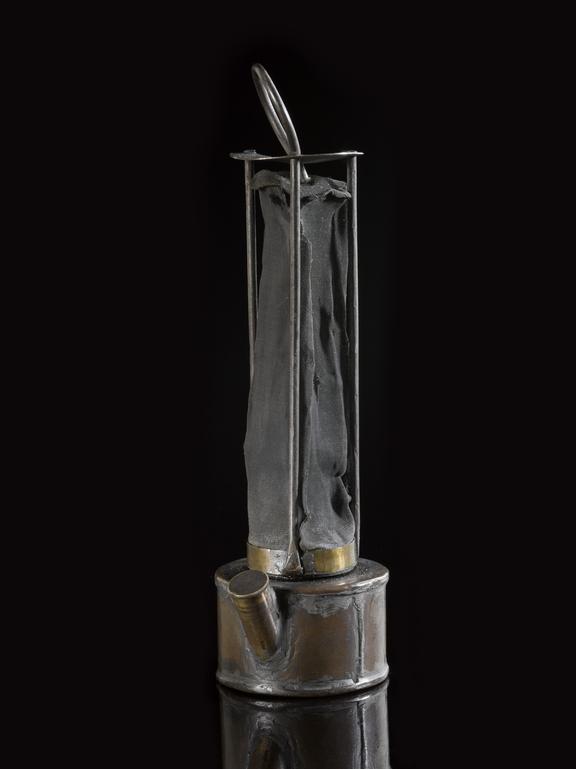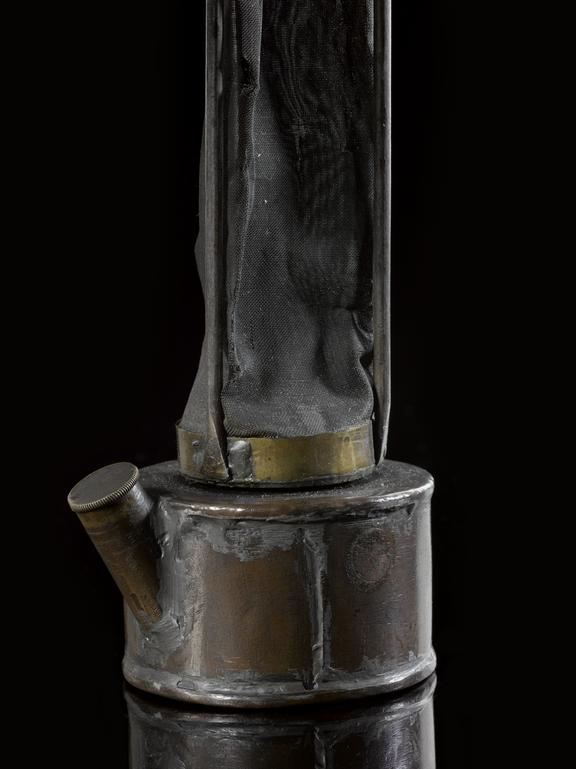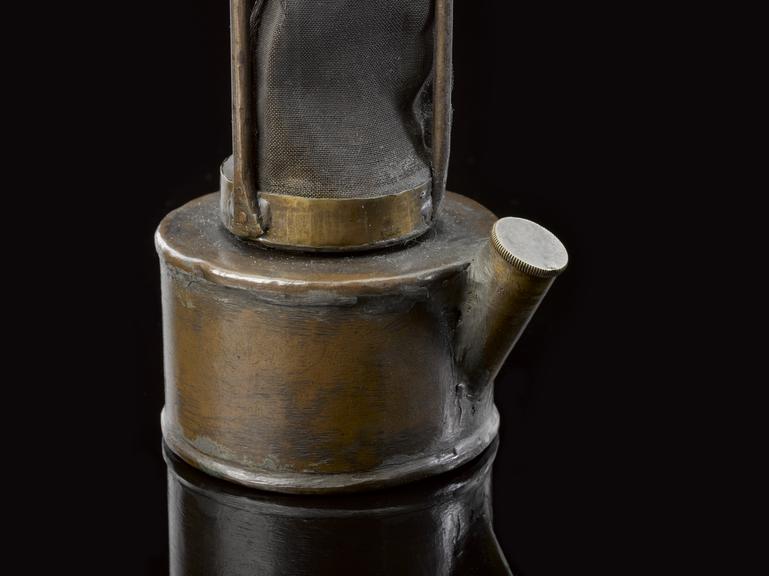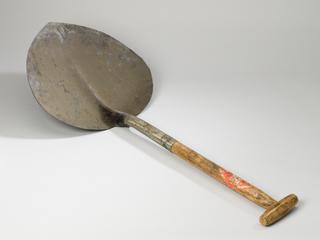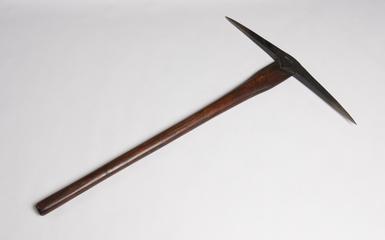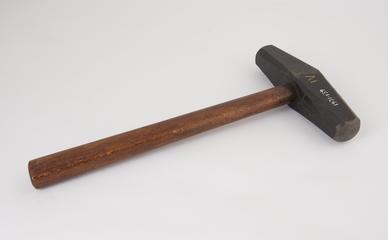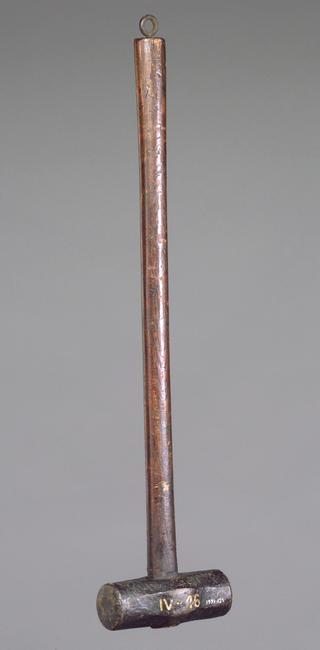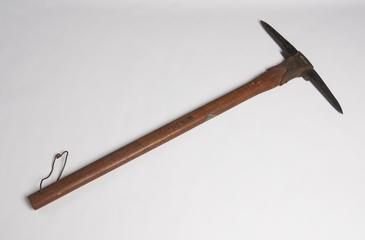Davy Safety lamp
Safety lamp invented by Humphry Davy in 1815. One of the first two to be used in a coal mine. A gauze chimney over a brass lamp.
More
This is one of the first safety lamps to be used in a coal mine, and was made by Sir Humphrey Davy. Before the safety lamp’s invention, miners would use candles or other naked flames, which carried a serious risk of causing explosions due to the presence of ‘firedamp’ – methane gas diluted with air - which resulted in heavy loss of life. From 1813, efforts were made to provide a safer form of light underground, in which Davy and George Stephenson were prominent. There has been a long controversy over which of the two men was first in making a safety lamp. However, Davy’s lamp was most significant because of his understanding of the scientific principles underpinning its safe design. It employed a fine wire gauze to surround the flame but let light out, Davy having established through experiments that explosive firedamp mixtures would not pass through such small apertures. For the reason of Davy's experimental approach, the lamp has also been described as one of the very first examples of technology as applied science.
- Object Number:
- 1857-208/1
- type:
- miner's safety lamp
- Image ©
- The Board of Trustees of the Science Museum
